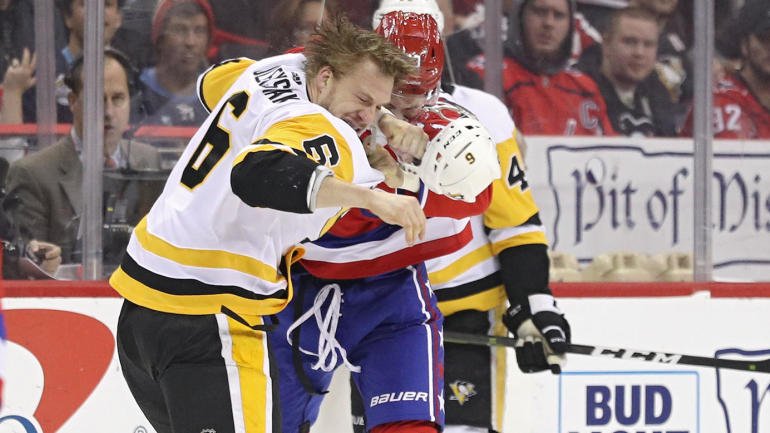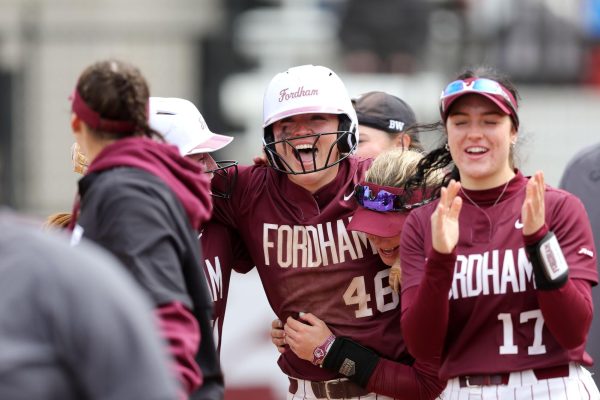Beyond the Scoreboard: About Concussions in Sports
We’ve all heard the stories before. We’ve read and heard about all of the different examples of head trauma suffered by pro athletes, specifically from football players. We’ve all heard the acronym CTE (chronic traumatic encephalopathy) and then proceeded to Google what exactly the phrase stands for and means. We all then had our reservations about continuing to watch football and supporting the NFl, and we’ve all had our reservations about children playing it. We all saw the film Concussion and then got upset when Will Smith was not nominated for an Oscar. We have done all of that.
From all of these things, the American public as a whole seemed to come to some kind of general consensus: this is a problem that we only have in American football.
But the fact of the matter is that head trauma is an issue that affects much more than the gridiron.
It’s common on the Internet to see photos and memes of a football or soccer player down on the field clear in pain with an injury juxtaposed next to hockey player, presumably after a hit or a fight, usually with a busted up, bloody nose and/or missing or broken teeth, still on his feet, and on skates no less, headed to the penalty box with almost no help. These images are a clear way of trying to assert that hockey players are just tougher than athletes of other sports.
Not to mention that they are, presumably, tougher in a sport that some may considered to be just too dangerous.
But that is what an outsider looking in would think. When you look inside, the National Hockey League’s history of confronting and dealing with the physical health of their players in such a physical sport is laughable and one of pure ignorance and denial.
Hockey is an historically physical sport. The first Stanley Cup was awarded in the 1910’s, and mandatory wearing of helmets of players is an idea that is only a couple of decades. It’s also the only sport where fighting, specifically of the one-on-one fashion, is not incredibly abnormal of an occurence and one that coaches, analysts and even referees do not particularly bat an eye to. Refs will try to break up the fights, if ever so meekly, and will give each player involved five minutes in the penalty box, but that is the extent of it. The fighting goes on, and the trend does not seem to be dying out any time soon.
And these fights have had their effects. Take two NHL stars from the late 1980’s and through the ‘90s: Todd Ewen and Bob Probert. The two were known as a couple of the league’s most frequent, and one might even say prolific, fighters, and they even fought each other on an occasion or two.
Before either of them had reached 50, they had both passed on.
These are not two isolated cases. In 2013, a class-action lawsuit of 10 former NHL players was filed against the league, with plaintiffs claiming that they had suffered severe head injuries during their careers and hockey executives had been ignorant, dismissive and negligent to their conditions.
You may not have heard much about hockey’s history head trauma before reading this. In full truth, as a hockey fan, I will admit that I did not personally know much about the brevity of the situation until very recently. Of course, there has been plenty of justified hullaballoo regarding head trauma in sports, but most of that coverage and public knowledge is geared in the direction of football and the NFL.
In true hockey fashion, even the NHL’s health scandals are overshadowed by football.
In 2018, the number of former NHL’ers that had thrown their name onto the lawsuit, and that number continues to grow, Now, obviously, none of these players are sure to have CTE, as the disease is only detectable in the brain after a patient has died. But eight former players that have since passed on have been found to have CTE upon completion of their autopsies, including Probert, former Ranger enforcer Derek Boogaard and Hockey Hall of Famer Stan Mikita. You would think that would be enough to give the players involved in the suit leverage to get the NHL to admit wrongfulness, give them compensation and further protocol regarding head injuries and discipline for violence.
But one major thing has gone wrong for these players in their quest for justice: Todd Ewen was an activist and important public figure for the NHL’s image after his retirement and after he tragically took his own life in 2015 following years of memory loss, spurts of anger and self-imposed isolation, it was revealed that he actually did not have the disease.
Hockey executives took that and ran with it. They used the results of Ewen’s as an excuse to stay static and claim there is no evidence that the league has wronged the players in any way. Ewen’s death, they claimed, was a suicide and had nothing to do with anything wrong in his head.
A suicide that was not caused by anything wrong in the head. That’s an almost Euthyphroian flaw in logic.
The NHL is going to have to admit that the death of a humanitarian like Ewen may not have exactly been CTE, but it was clearly in some way related to head trauma. They are denying reality by refusing to confess that perhaps the violence of their game causes issues. That’s a difficult concept for anyone involved in professional sports to take a gulp and admit, even in other sports with violent tendencies like rugby and even soccer. Sports still has that innate mentality of intensely physical theatrics that has been there since the days of the ancient civilizations.
But if the Greeks and Romans had our doctors and technology, perhaps they would not have jousted either.
The National Hockey League is already technically the least popular of the major North American professional sports. The last thing they need is for this scandal to continue to snowball.

Dylan Balsamo is a junior at Fordham College at Rose Hill, double majoring in film & television and music, or, as he likes to call it, majoring in...







































































































































































































